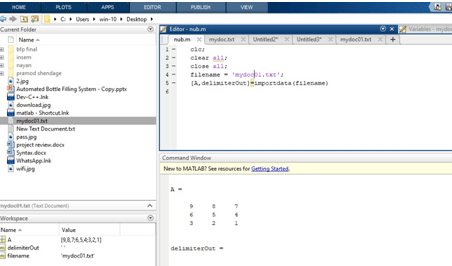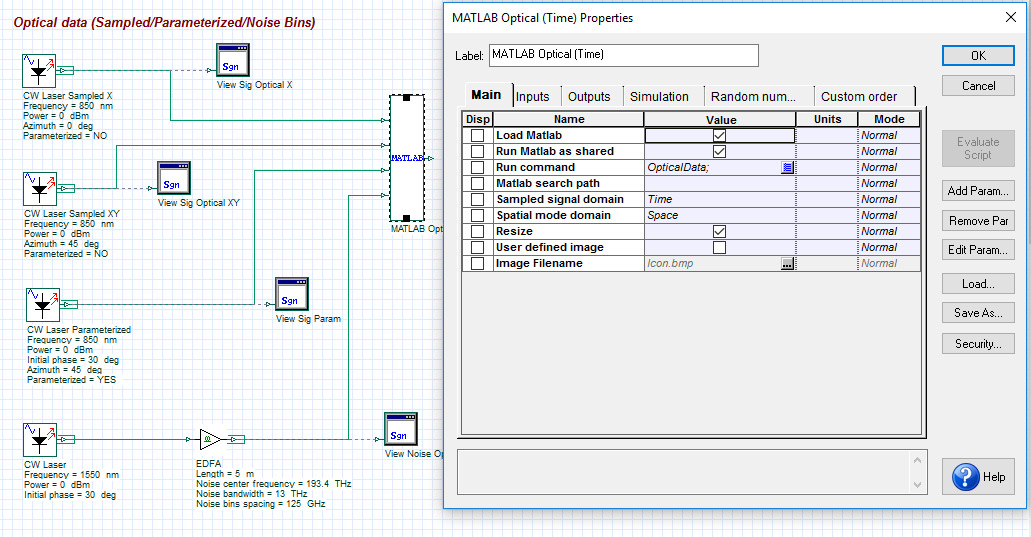

- WHICH FORMAT MATLAB USES TO SEND DATA TO ARDUINO HOW TO
- WHICH FORMAT MATLAB USES TO SEND DATA TO ARDUINO INSTALL
- WHICH FORMAT MATLAB USES TO SEND DATA TO ARDUINO ZIP FILE
- WHICH FORMAT MATLAB USES TO SEND DATA TO ARDUINO SERIAL
ThingSpeak takes the message and stores its content in a ThingSpeak channel. A message might contain the current temperature in an office collected by a sensor. ThingSpeak has recently added an MQTT broker so devices can send messages to ThingSpeak. MQTT is used to pass short messages to and from a broker. MQTT is a common protocol used in IoT systems to connect low-level devices and sensors.
WHICH FORMAT MATLAB USES TO SEND DATA TO ARDUINO SERIAL
MegunoLink Overview Installing and Licensing Installing MegunoLink Setup Arduino Integration Enter MegunoLink License Uninstall Instructions Getting Started Getting Started with MegunoLink What is a Visualizer? Arduino Integration Making a Serial Connection Plotting Data Build an Arduino Interface Process Serial Commands with an Arduino Arduino Examples Visualizers Connection Manager Connection Manager Overview Serial/ USB Connections UDP WiFi or LAN Connections TCP Client Connection TCP Server File Source XBee Series 2 Pro Merged Source mDNS Browser Arduino Upload Monitor XBee Manager Examples Making a Serial Connection Arduino ESP8266 WiFi UDP Plotting Find ESP32/ESP8266 IP Address on a WiFi Network using mDNS Talk to the ESP32 over WiFi Advanced Adding Custom Baud Rates Serial Monitors Serial Monitoring Overview Raw Serial Monitor Message Monitor Visualizer Message Library Arduino Reference Examples Sending clean CSV data from an Arduino Advanced Message Command Reference Interface Panel Interface Panel Overview Control Reference (Buttons, Textboxes. format for recording and processing in MS Excel or MATLAB. Send current time and measurement data to MegunoLink in CSV If (TempDegC < -10 || 40 < TempDegC) // unreasonable indoor temperatures Check for errors in temperature measurement. Int RawTemp = analogRead(A1) // raw, unhelpful unitsįloat TempDegC = ((float)RawTemp*5*100)/1023 - 50 // Degrees C Read temperature measurement (TMP36 temperature sensor). If (Light = 0 || Light = 1023) // photo/plain resistor disconnected Check for errors in light measurement. Int Light = analogRead(A0) // arbitrary ADC units (0-1023) Read light measurement (photo resistor). Serial.println("Time, Light, Temperature") Serial.println("CSV Message Monitor Example") "Data" = the taget message channel (select this or "All" in MegunoLink). Create Message class instance to use when sending measurement data.
WHICH FORMAT MATLAB USES TO SEND DATA TO ARDUINO INSTALL
"Sketch"->"Include Library"->"Manage Libraries."-> search and install MegunoLink libraries, install if missing:
WHICH FORMAT MATLAB USES TO SEND DATA TO ARDUINO HOW TO
* to see how to use our Message Monitor and * allowing clean data recording without limiting serial usage. * can seperate the CSV measurements from the other serial traffic, * Sends sensor measurements in Comma-Seperated Value (CSV) format This example also requires our Arduino Library.
WHICH FORMAT MATLAB USES TO SEND DATA TO ARDUINO ZIP FILE
You can download a ZIP file containing the CSV Message Monitor example Arduino program and matching MegunoLink interface below. The messages could also be received and automatically recorded to a text file by the Message Logger visualiser, without having to manually copy or save the data as with the Message Monitor. Thus measurements over serial were easily obtained and processed without having to manually trim away debug statements or dedicating the serial port to sending only measurement data.Īdditionally, the data in the messages can be nearly any string of characters you desire, not just the CSV formatted values shown here.

It was plotted, showing the light reduction and temperature increase measured when a finger was placed on the corresponding sensor. The sensor data copied onto the clipboard was pasted into MS Excel and converted using the “Text to Columns” feature. CSV-formatted values can be converted from text into proper numerical columns using Excel’s “Text to Columns” feature and selecting “Comma” as the delimiter.


 0 kommentar(er)
0 kommentar(er)
